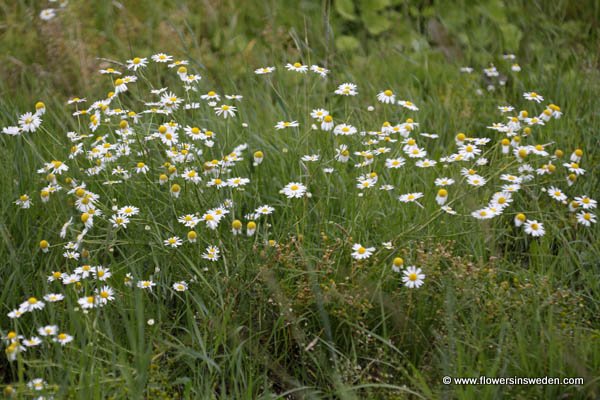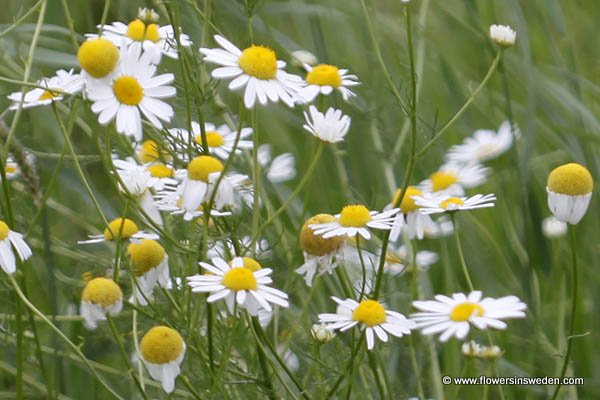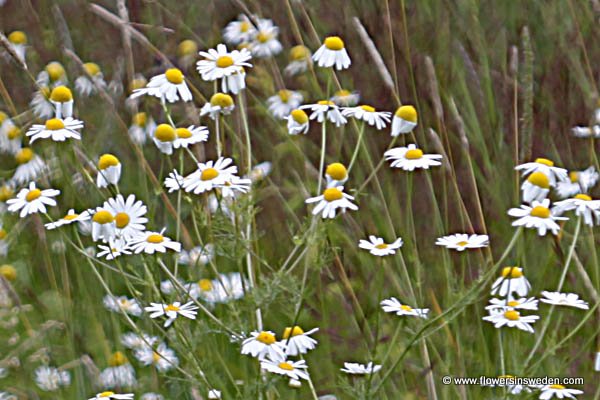
| Scientific name: | Chamomilla recutita (L.) Rauschert | |
| Synonym name: | Matricaria recutita L., Matricaria chamomilla L., Matricaria suaveolens L., Chamomilla chamomilla(L.) Rydb. | |
| Swedish name: | Kamomill, sötblomster, äkta kamomill | |
| German name: | Echte Kamille | |
| Nederlandse naam: | Echte kamille | |
| English name: | Scented Mayweed, Wild chamomile, Hungarian chamomile, Pineapple weed | |
| Plant Family: | Asteraceae, Sunflower family, Korgblommiga växter |

|
| Life form: | Annual herb | |
| Stems: | Height 10–50 cm, erect, branched, up to 1m tall | |
| Leaves: | Alternate, soft, bipinnate or tripinnate | |
| Flowers: | Panicle flowerhead; white ray florets are furnished with a ligule, while the disc florets are yellow; the hollow receptacle (the thickened part of a stem from which the flower organs grow) is swollen and lacks scales | |
| Flowering Period: | June, July, August, September | |
| Fruits: | Achene with pappus small or absent | |
| Habitat: | Arable land |

Derivation of the botanical name: Chamomilla, Greek χαμαίμηλον, chamaimēlon, "earth-apple"; χαμαί chamai, "on the ground"; μήλον mēlon, "apple", referring to the smell of the blossoms. recutita, apparently bare of epidermis, skinned. Matricaria, Latin matrix, "the womb," the plant once having been used as a cure for female disorders. suaveolens, sweet-scented.

|